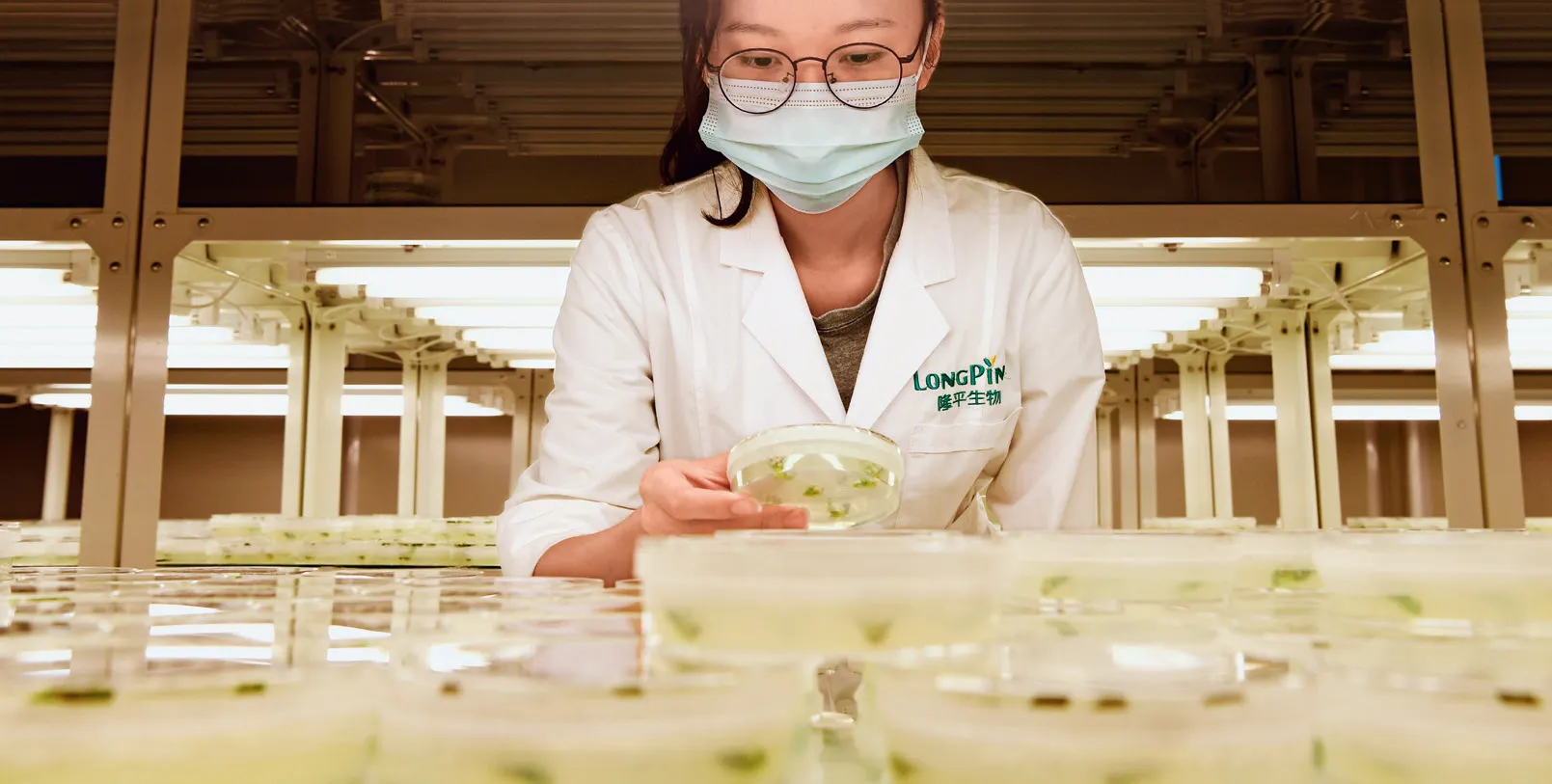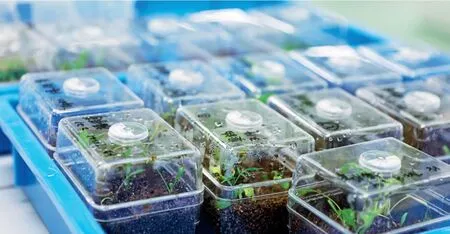Sowing Seeds of Food Security
By staff reporter LI KAIZHI
China is vigorously developing its seed industry to ensure seed and food security.

A researcher is working at the Yazhou Bay Seed Laboratory in Sanya, Hainan Province, on November 25, 2021.
CHINESE President Xi Jinping reiterated the importance of the seed industry and stressed the crucial role of “Chinese seeds” in ensuring the country’s food security during an inspection of the Yazhou Bay Seed Laboratory in Sanya, south China’s Hainan Province, on April 10, 2022.
China’s food security can only be safeguarded when seed resources are firmly held in its own hands, Xi said. “To ensure that China’s seed resources are self-supporting and under better control, selfreliance must be achieved in seed technology.”
Seeds are dubbed as the “chips” of agriculture. Improved seeds are the basis for stable and increased production of grains and other crops. In this sense, sound seed development is crucial.
Statistics show that since the 18th National Congress of the Communist Party of China in 2012, the development of China’s modern seed industry has achieved remarkable results. The sown area of home-grown varieties of crops has accounted for more than 95 percent of the total, while the seeds of two key staples, rice and wheat, have been 100 percent self-sufficient. For major crops, improved varieties have exceeded 96 percent of the total, contributing 45 percent of the increase in grain yields.
China’s grain output reached a record high of 683 million metric tons in 2021, according to the National Bureau of Statistics, and the per-capita availability of grain reached 483 kg.
In terms of seed development and seed security, Hainan Province is at the forefront in the country.
Lab Breeding
With favorable light and temperature conditions, Hainan is an important seed-breeding base in China. According to statistics, thousands of scientific and technical personnel from 29 provincial-level administrative regions have visited Hainan to work on seed breeding.
The province has developed more than 20,000 new varieties of major crops, accounting for more than 70 percent of the country’s new varieties. In order to build a base for seed development and scientific research, Hainan established the Yazhou Bay Seed Laboratory on May 12, 2021. The lab has become a venue for collaboration among various research institutions and universities to jointly tackle key problems.
“The lab, as a public research platform, can create a better research environment for researchers,” Chen Fan, executive director of the Yazhou Bay Seed Laboratory, said. The researchers from different research institutions and colleges share the platform to conduct joint breeding research.
At present, Hainan is taking Nanfan Science and Technology City, where the laboratory is located, as the core to accelerate the creation of other seed breeding and production programs. A total of 12 public and open research platforms such as the National Center of Technology Innovation for Saline-Alkali Tolerant Rice are now transforming the area into an agricultural research base.
Whether it is corn in the northeastern part of the country or cantaloupe in northwest China’s Xinjiang Uygur Autonomous Region, there are agricultural researchers in Hainan developing seeds for all types.
After rice is pollinated by natural or artificial techniques, new hybrid rice seeds can be produced, which will vary in quality, yield, disease resistance, insect resistance, and other aspects, so it is necessary to select high-quality varieties for further breeding.
“Now the laboratory is complete with all kinds of high-end equipment. The national seed industry research resources have been gathered here to spur innovation,” Ren Zongliang, a graduate student of the Chinese Academy of Agricultural Sciences, said.
Since last September, Ren has been studying with the research team in the laboratory. Because the breeding base and laboratory are integrated in Hainan, he no longer has to frequently travel between Hainan and various scientific research institutions across the country, as was the case in old days.
With the rapid development of technology, many digital and information technology tools are now being used in the seed laboratory. The laboratory has built an online technical platform for sharing seed research and innovation.
Guo Qiaoping, a technician at Yazhou Bay Science and Technology City Development and Construction Co., Ltd., said that by just using a mobile phone they can remotely check the growth of crops in the plot, through images taken by a remote sensing drone.
“We can also use a vehicle installed with the monitoring equipment for weather, soil, water quality, as well as various sensors to do the monitoring,”Guo added.

Plant seedlings in the Yazhou Bay Seed Laboratory.
technology
With the rapid development of technology, many digital and information technology tools are now being used in the seed laboratory.
Looking ahead
Although China has reaped bumper grain harvests in recent years and the supply of seeds is guaranteed, compared with the advanced world level, there is still a gap in independent innovation in the seed industry, and the foundation of food security is still not solid. China is a big agricultural country with a large demand for seeds, but its seed industry is not strong yet.
“The problem with seed security is that the
original technology for breeding some seed varieties planted in China isn’t in our hands. In other words, we do not have the related independent intellectual property rights,” said Zhao Wanping, vice president of the Anhui Academy of Agricultural Sciences (AAAS), in an interview, adding that at present, China is able to develop advanced seed technologies for staple foods including wheat, rice, and corn. However, when it comes to some high-end vegetables and fruits, flowers, and animal species, China’s technological capability still falls significantly behind that of developed countries.
Currently, the AAAS has 14 research institutes. It plays an active role in breeding many varieties of rice, wheat and other kinds of crops in the province and across the country.
“We have already recognized the gap between China and developed countries in terms of seeds, and China’s agricultural scientific personnel have made continuous efforts to narrow this gap,” Zhao said.

